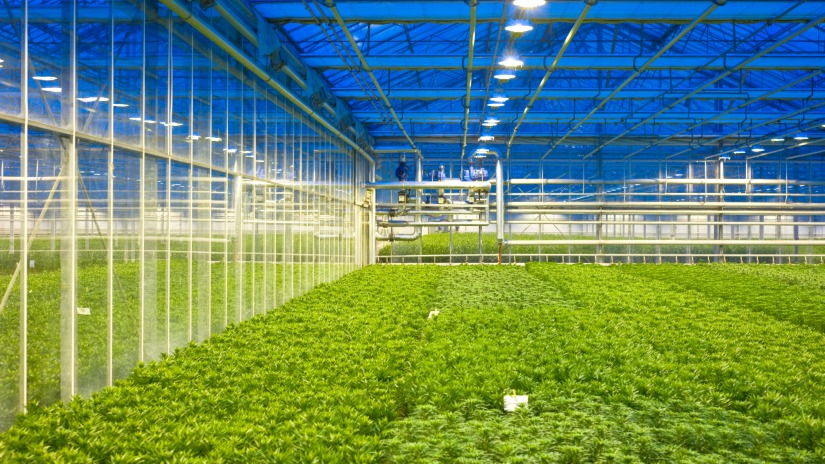By Carlos Elena-Lenz, Sustainability GTM, Hitachi Vantara and Craig McLellan, Founder & CEO,
Think On, Inc.
Think about the amount of electricity required to power IT infrastructures. Data centers now account for about 2% of the total U.S. electricity use. At first blush, that percentage might not sound consequential – until you discover that data centers consume between 10 to 50 times the energy per floor space of a typical commercial office building.1 Another telling statistic: one data center can consume the equivalent electricity of 50,000 homes.2
It’s part of a bigger trend. McKinsey estimates 10% annual data center growth in the U.S. market through the end of the decade, with power consumption projected to reach 35 gigawatts (GW) by 2030, up from 17 GW in 2022.3 What’s more, as our hunger for data continues to climb, organizations face higher energy costs.
You can see where this is going. But is it possible to lay the foundation for a different future and minimize information technology’s environmental impact? We believe so.
Sustainability isn’t only about doing the right thing; it’s also a matter of smart business. Forward-looking organizations understand why it’s in their enlightened self-interest to weave greener DNA into every digital thread, deploying technologies that aren't just smart but also eco-conscious. So, how should businesses balance their growth goals with an imperative to reduce their carbon emissions? Let’s take a closer look.
Our goal should be to improve infrastructure efficiency and reduce the use of components that harm the environment. In the past, overriding concerns around uptime often led organizations to over-provision. A company that could get by having two transformers opted to deploy four. Instead of one generator, they used two. But the energy to power all that exacts an environmental cost, depending on the source. For example, diesel generators are reliable and do a great job. However, their emissions also contribute to the production of ground-level ozone and acid rain.
That’s why Hitachi Energy is helping customers find ways to either reduce the total number of diesels in their fleets or introduce the use of battery energy storage systems that integrate with the grid. In the Netherlands, we’ve been working with customers who actually use heat from data centers to power greenhouses to grow tulips! We’re just scratching the surface. As technologies advance, we can envision deployment of emerging technologies like hydrogen fuel cells and even small modular nuclear reactors to make data centers more sustainable.
Organizations like the Green Software Foundation and others are increasingly advocating for the adoption of green software patterns as applications get developed. It’s important to think about how to ensure that compute workloads are optimized to minimize energy while also potentially improving performance. We’ve been working with some customers trying to do just that. The idea is to shake free from compute-intensive models and algorithms while also reducing energy costs.
Elsewhere, organizations should search for opportunities to reuse the same infrastructure components to deliver multiple services. One of the powerful things about cloud computing is that you don't have to worry about wasted workloads. If you have capacity needing compute, transient storage or permanent storage, you can use it. That optimization capability ultimately translates into a lower overall cost.

Data-based insights can help organizations better calibrate the operation of their network compute and storage instances to establish better energy efficiency profiles.
It’s hard to sufficiently underscore how important this is. Do you understand your data policies regarding redundancy, ingress, and egress? How much data are you actually storing? Do you have data that you don't need to store? Viewing all that through a sustainability lens not only bolsters energy efficiency but also improves overall business operations.
For example, you might discover a certain set of storage systems is using quite a lot of energy. It makes sense to change those out for more energy efficient systems. Similarly, a closer look at your facility might point to cooling problems that require changes in your HVAC systems. These are easy fixes that, again, improve performance and reliability while reducing energy usage.
A big part of the sustainability story is the result of the digital transformation of the enterprise and the digitalization of the entire power chain. You doubtless are familiar with the adage that ‘you can't manage what you can't measure.’ In the past, a company might have had different systems communicating in different languages. That left IT stuck trying to figure out how to make them talk with each other. Needless to say, it was a complicated and difficult job.
It’s more manageable when organizations adopt data center infrastructure management which allows managers to use information better to optimize performance. Now they know where the volts and amps are going to and coming from. They know how they’re producing energy. And they can measure their efficiency versus other sources. All that visibility into data, which allows for a myriad of actions, was not previously possible.

Start by understanding where you are in your journey. Do you have the right skills and knowledge? Do you have all the right data analytics and insights to understand the areas where you can make the most significant impact? Is it with renewable energy? Is it with your application architecture? Is it with your storage? How do you know?
If you've never built microgrids and now you're looking to incorporate renewable energy, it helps to enlist a trusted partner with a diverse set of skills and knowledge. Here’s where Hitachi is helping organizations make those decisions and get results.
Some IT departments might be wary of initiatives around greater IT sustainability. It is, after all, a relatively new idea for most businesses and data center managers may be reluctant to be the first to do something. But as we’ve noted, applying a sustainability lens leads to better operational results and lower energy costs.
Sustainability does not happen by chance; it’s a choice. But with so many moving pieces, you need to be sure everyone’s working together. So, involve all your vendors in the conversation. Suppliers have their own objectives, which may or may not align with yours. Don’t take anything for granted because it's not always the obvious supplier that will have the most impact on your environment. Sustainability is a huge topic with many moving pieces, so you need to be sure everyone’s working together.
And remember, communicate, communicate, communicate. Break things down into practical steps that everyone can individually do to help realize the common objective. This is part of building a new culture and so, you’ll need to involve everyone in the organization in your strategy and vision.
While it may take several years – this is part of a continuous journey, after all – the ultimate payoff is well worth the effort.
Hitachi can help

Sustainability GTM, Hitachi Vantara
Carlos is a cross-disciplinary technology & innovation leader. His passion lies with the application of technology and design to help people and society at large. His expertise intersects across technology, strategy, and design. His past roles include Technology Strategy & Innovation Consulting at frog design, IoT Consulting & Advisory at Cognizant, and various roles across software engineering and business development.
Drawing upon his background in IoT, Carlos has partnered with organizations to realize sustainability initiatives that enhance operational capabilities, cost savings, and achieve environmental goals. At Vantara he leads Sustainability GTM Strategy and Solution activities with a focus on digital energy, decarbonization, and Commercial EV.

Founder & CEO, Think On, Inc.
Craig McLellan, Founder and CEO of Think On, Inc., has been at the forefront of technology innovation and data security in Canada and the U.S. for the past twenty-five years. Under Craig’s leadership, ThinkOn continues to grow, both organically and through strategic acquisition, and is ranked on both the Deloitte Technology Fast 500™ and The Globe and Mail’s list of Canada’s Top Growing Companies. A pioneer in cloud services, ThinkOn was one of the first companies in the world to receive VMware Cloud Verified certification and was recently recognized as a VMware Sovereign Cloud Partner for Canada. Craig currently sits on advisory boards for several industry-leading organizations including Veeam, Hitachi, and VMware, where he helps to guide strategy.